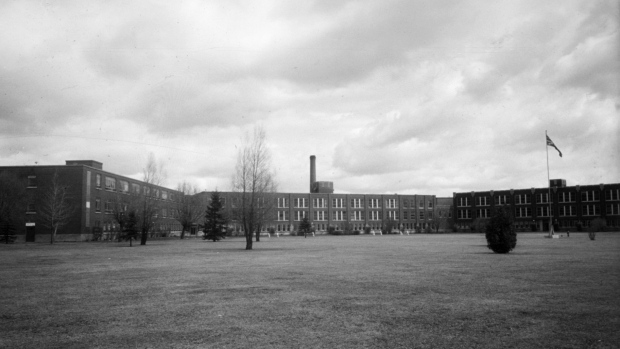Resumen: Maureen Lux es un profesor de historia en la Universidad de Brockquien habló con una multitud de invitados sobre su nuevo libro «Camas separadas: una historia de los hospitales indios en Canadá, 1920s-1980» en el que explora la historia de hospitales de la India y las muchas contradicciones en el seno de la asistencia sanitaria para los canadienses indígenas en el siglo 20 . En el mismo se reseña un capitulo doloroso en la historia de Canada en relación al trato con sus aborigenes cuyos hijo fueron internos en las escuelas residenciales, mientras que las mujeres indígenas eran asesinadas y desaparecidas, situación que en la actualidad es oficialmente objeto de una investigación nacional. Al igual que la segregación racial vivida en las escuelas, tambien acontecieron situaciones similares en hospitales llamados «hospitales de la India», como se les conocía en el momento, operado en Canadá hasta la década de 1970, creados inicialmente para aislar a los pacientes indígenas con tuberculosis, pero que pronto se convirtieron en una forma de asegurar a los colonos canadienses por una parte los beneficios de la modernización de los hospitales sin tener que compartirlos con los pacientes indígenas, y por otra para asegurarse tener pacientes para la experimentación.
Canada is still coming to grips with several painful chapters in its history of relations with Aboriginal people. Canadians are finally becoming broadly acquainted with the shameful history of residential schools, and the issue of murdered and missing indigenous women is now officially the subject of a national inquiry.
Less well-known is the history of racially segregated hospitals in Canada. So-called «Indian hospitals,» as they were known at the time, operated in Canada until the 1970s.
[Residential schools and Indian hospitals] are rather like nodes in a larger web of incarceration, segregation, marginalization. – Maureen Lux
Born out of a mixture of paternalism, prejudice, and fear, Indian hospitals were created to isolate Indigenous tuberculosis patients — but they soon became a way to ensure settler Canadians could reap the benefits of modernizing hospitals without having to share them with Indigenous patients.
They were under-staffed and over-crowded, and some former patients say they were the victims of abuse and medical experimentation.
They rarely judged the Indian hospitals against other hospital standards. Instead, they judged the Indian hospitals against the perceived inadequate homes on reserves. So regardless of the conditions in the hospitals, the bureaucrats always understood that patients were better off in hospital than they would have been at home. It was very much the same justification that was used to take children from their homes and put them in residential school. – Maureen Lux
Maureen Lux is a professor of history at Brock University. She spoke to guest host Kevin Sylvester about her new book, Separate Beds: A History of Indian Hospitals in Canada, 1920s-1980s, which explores the history of Indian hospitals and the many contradictions at the heart of healthcare for Indigenous Canadians in the 20th century.
Click the ‘play’ button above to listen to the intervie
Fuente: http://www.cbc.ca/radio/thesundayedition/revolver-at-50-canada-s-history-of-segregated-healthcare-frog-march-firings-penny-lang-1.3707673/the-story-of-a-separate-and-unequal-canadian-health-care-system-1.3707678







 Users Today : 262
Users Today : 262 Total Users : 35459857
Total Users : 35459857 Views Today : 436
Views Today : 436 Total views : 3418408
Total views : 3418408